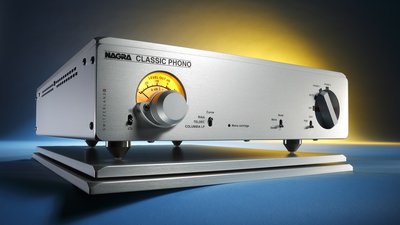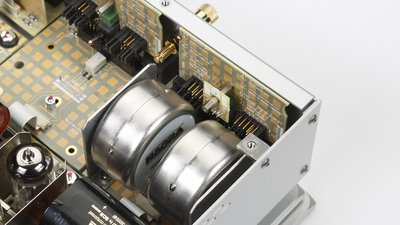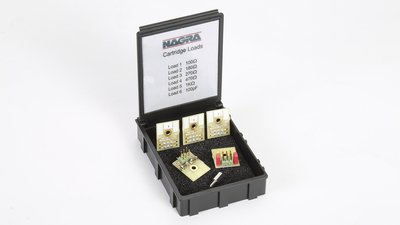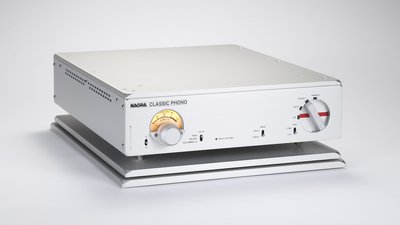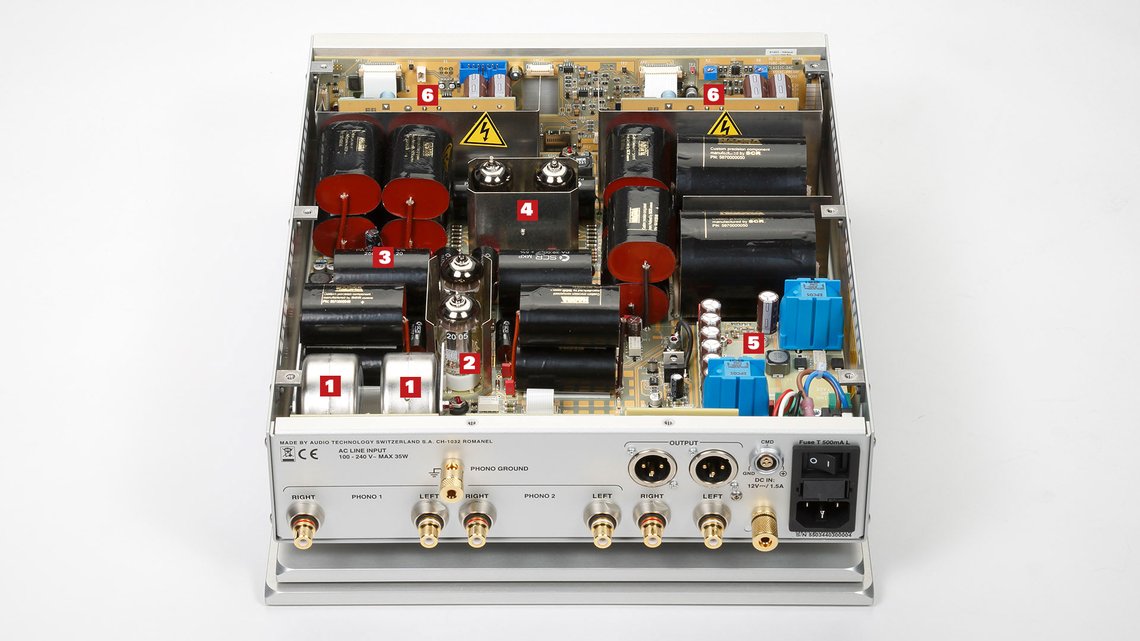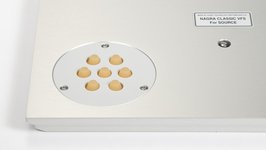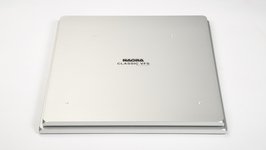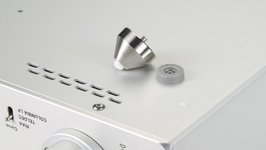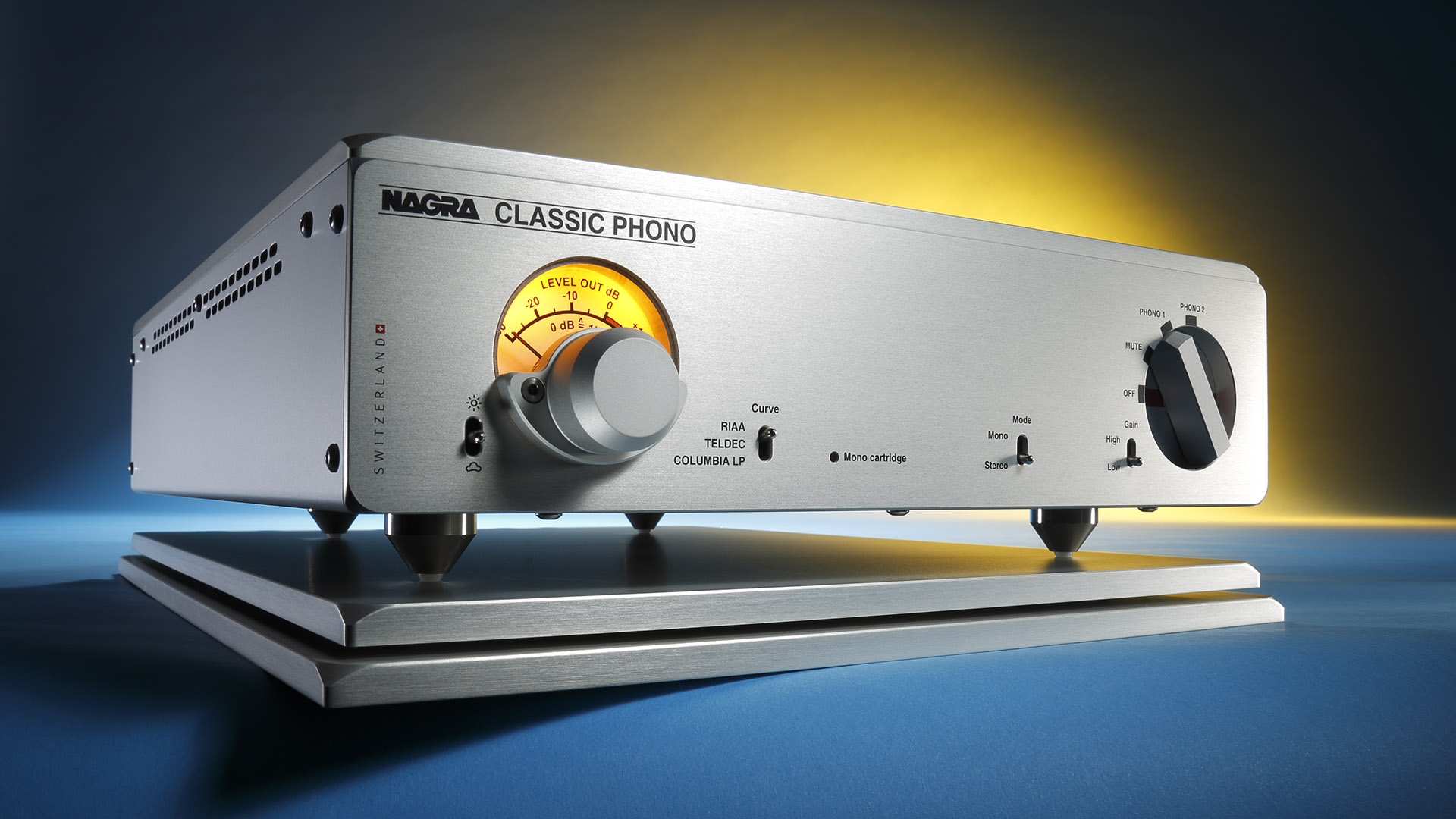
Phono Preamp Test
Nagra Classic Phono Review
The Authority – The name Nagra not only stands for tradition, but also has to be associated with a high level of precision, workmanship as well as audiophile finesse – and the new Classic Phono clearly shows why. It celebrates the "vinyl sound experience" on an unimagined, fascinating level.
What attracts the sophisticated audience all around the world even more than "Made in Germany"? Correct: "Swiss Made"! Whether it‘s Rolex, Ricola, Victorinox or Lindt – all these names stand for highest performance in their respective fields. For professional audio electronics, one can confidently add Nagra to the list. If you just take a look back at the high-class, indestructible and therefore famous tape recorders made by the brand – which has been based right next to Lake Geneva since it was founded in 1951 – it almost seems as if the company single-handedly established the high reputation of products from Switzerland.
Until 1997, this reputation was mainly found in the studio sector. Since then, Nagra enriches the realms of high end with numerous devices; up to the, in every respect, ultimate "HD" series. Among them, phono preamplifiers are also to be found – just think of the clever, battery-powered BPS; or the VPS, which until recently held the top position in this category. Like the entire small line of products by means of which Nagra stirred up the hi-fi world at the beginning, production of this device was stopped recently.
The Classic Phono now takes its place, technically belonging to Nagra‘s most basic line of products. But what does that even mean, keeping in mind the high standards of the Swiss company? At their headquarters in Romanel-sur-Lausanne, a lot of manual work is put into their devices – and matching price tags are written. Thus, Nagra lists the flat Phono Pre – sitting inside the slender housing of the "Classic" series – at a lofty 19,500 euros. The optional "VFS-L" base (see "The Phono-King's Throne" at the side) still comes on top, which we urgently advise you to include.
And what do you get in return? Well, the best phono preamplifier that STEREO has ever had the pleasure of testing, for example. We expected that the Nagra would put our proven references to quite a test. But there was no tough struggle, it made "short work" of them. We had put an exquisite white pressing of the 45 RPM reissue of "The Guitar Artistry Of Charlie Byrd" on the Transrotor Rondino nero and lowered the needle of EMT‘s superb MC JSD Pure Black into the groove in front of "Speak Low".
A Show of Force
What followed can hardly be described as anything other than a show of force. Hitting the notes as well as the feeling perfectly, Byrd and his attendants stood between the speakers. The sound came along big, characterized by calm breathing and musical tension at the same time; sparkling with liveliness and details. When the guitarist vehemently plucked at the strings and knocked on wood in the middle of the thrillingly flowing spectacle, everything abruptly got louder – but not a bit tighter or more disorderly. The previous top preamps did not manage to do this with such an ease, decisiveness and natural grace. The Classic Phono clearly marked its newly conquered territory.
Of course, all components involved – we also had Cardas Audio‘s fabulous Clear Beyond Phono cable, for example – contributed to the incredible result. The Nagra, usually equipped with one individually switchable input each for MC and MM pickups, made the decisive difference, however.
A really special feature is the possibility of playing old records produced according to the Teldec or Columbia equalization curves with the correct equalization; and thus tonally correct. This refers to LPs made before 1955, so it is interesting for collectors of original pressings. Everything produced afterwards – and of course modern re-releases of music from that era – is made according to the valid RIAA standard.
The precisely calibrated level meter called "Modulometer" is a typical feature of Nagra devices. It can be dimmed in several steps by a tiny switch, in correspondence with a cute little sun and cloud symbols. On the scale of the modulometer, you can see how high the current output level of the Classic Phono is on average. In conjunction with MM and MC cartridges of typical output voltages, the pointers will hover around the mark of minus ten decibels. When using particularly "quiet" MCs or certain high-output MCs – which run on the MM input, as we all know – the level of the tube-supported output stage can be raised by ten dB. This process then provides proper and usable voltages to the following amplifier. "Gain High" should only be used in these previously mentioned cases, in which it makes the performance punchier and more accentuated. Together with normal MM and MC pickups, however, this setting gave the performance a slightly stressed vibe – recognizable by the indicators swinging above "0 dB". If in doubt, just try it out!
And there is something else that must be taken into account when working with the Classic Phono: If you think that the mains phase is irrelevant here because your testing device provides indifferent information on the high clocked switching power supply of the Nagra, you are mistaken. For the sound, a clearly preferred direction is to be found (see image in the lab comment). If you connect the device at random – and therefore possibly wrong –, you might lose some of the magnificent openness, playfulness and smoothness of the Swiss phono preamp.
Elegance & Delicacy
That would not only be a shame, but almost a crime. The Classic Phono is capable of gaining respect from even the most hardened vinyl listeners. To help with that, it can be precisely adapted to the respective cartridge via small circuit boards – a selection suitable for most uses is included and Nagra is happy to fulfill special requests – and jumpers.
A bass line as profound as it is crisp is one of the blessings of James Taylor‘s "Her Town Too" (MoFi reissue). Every part of it stood between the speakers as if polished and tightened, while still being perfectly homogeneous, with an ease hardly ever experienced before. The fine guitar details blinked delicately out of the organic, lively sound cosmos like stars against a pitch-black background.
The Cure‘s "Out Of This World", which builds up into a massive collage of diverse sounds in front of the listener, appeared exactly like that: powerful and fascinating in its dense complexity, clearly defined down to the thinnest strand; one which we had not yet discovered prior. But we have to admit that this only succeeded in full when the Nagra "rested" on the VFS-L base.
However, the Classic Phono will certainly be of great benefit to lovers of orchestral pieces or opera music. Reference Recordings‘ version of two violin concertos by Gian Carlo Menotti and Samuel Barber, which is outstanding in every respect, should be mentioned as a representative example – one of the best orchestral recordings from their already rich fund of them. The holographic qualities in the imaging of the groups of musicians, the sensible visualization of the timbre of their instruments, and the breathing, shimmering aura of the whole environment set standards. Once again, the performance seemed as if coming from one mold and at the same time completely unadulterated as well as fanned out. This led to the compositional perspectives, i.e. the statement made by the music, being distinctly highlighted.
Nagra Unties the Knot
There can be no question about it: great records are clearly enhanced by the phono expert from Switzerland; they can show what they‘re truly made of. But the real advantage of a high-end phono preamplifier lies especially in the "unclenching" of critical records: such as Kenny Wheeler‘s big band project "Music For Large And Small Ensembles". This album presents difficult terrain, in which it is not uncommon to go through wildly sprawling thickets of sound – wherein the multi-layered wind instruments, rich in overtones, get acoustically entangled in each other all too easily; and immediately become annyoing as soon as something is not right. At the same time, Norma Winstone‘s breathed voice floats around some of these narrow passages almost elf-like – and must not under any circumstances be pressured by the band, which is playing itself concisely and vehmently into the foreground.
As a fan of this outstanding album, you will have tears in your eyes when you experience what an outstanding turntable, pickup and the corresponding phono pre make of this demanding piece of music. Suddenly, energetic knots are untied, sharpness is transformed into radiance, and the pressure – which at times overpowers not only simpler devices –, is converted into a fanned out image in which the musicians are clearly seperated; and, in general, detachment and naturalness triumph. Where there has previously been an artificiality that expressed itself in glassy harshness and a helpless surrender to the onslaught of the big band, comes now the smooth cultivation of its intensity.
In any case, I have never experienced this masterpiece as I did on Nagra‘s Classic Phono. After it relentlessly scrutinized every hi-fi component, I have to apologize for having attributed its sonic limitations to the recording itself. Those who do not move in the (mental) realms of high fidelity can hardly comprehend such moments of happiness. It is as if one discovers that a beloved, but supposedly not quite well-behaved child has a heart of gold after all.
Nagra‘s phenomenal Classic Phono certainly has one of these. It set itself apart from its competitors in such a strikingly clear manner that it now rules the reference league of phono preamplifiers as the sole authority. An extremely satisfying, but financially ambitious pleasure. To experience the "Swiss Made" pre in all its glory, you indeed need the expensive VFS throne on top of that. Well, being nobility comes with its own challenges, even in the case of hi-fi...
NAGRA TRADITION: TUBES & TRANSFORMERS
After opening the lid of Nagra‘s phono pre, the eyes of tech fans will grow wide: highest-quality components en masse are part of a well thought-out concept, finished with meticulous workmanship. MC signals are first boosted by 16 decibels per channel via transformers 1 of the "Nagra League" – experts know what that means –, which are encapsulated in an annealed mu-metal housing. Their coil wires have been cryogenically treated and their cores are the same as those in the 63,000 euro "HD Preamp".
Maximum phase stability was a key objective when manufacturing these parts, which was done in-house by Nagra specialists. The input stage 2 consists of a double triode from Genalex‘ "Gold Lion" series of the type B759 (ECC83) with induction-free heating, selected on the basis of lowest inherent noise. This stage is completed by a no less strictly selected B739 (ECC81), both together producing 38 dB of gain. The equalization stage – besides RIAA, two other standards are offered – consists of capacitors, coils and resistors 3, all classic and as specified by the manufacturer.
The two E88CC in the output stage 4 are also borrowed from the HD Preamp. At "Gain High", these raise the level by 10 dB. The signal coupling is done via polypropylene capacitors of exact specifications plus small "Jupiter Copper Foil" capacitors, which are located at "strategically important places".
Effort was also put into the four-layer circuit boards with gold-coated tracks and optimized grounding, protected against impact noise by means of small rubber rings.
One state-of-the-art feature of the Classic Phono is its dual-mono switching power supply, clocked at 200 kilohertz 5. This feeds the channel-separated high-voltage power supplies 6. The PSU is supposed to be as quiet as possible – thanks to extensive filtering through a phalanx of polypropylene capacitors – but at the same time react extremely quickly when power is demanded.
Verdict
The ultimate phono preamp comes from Nagra! Thanks to a lot of effort and professional technology, the Classic Phono fulfills the dreams of analog fans. In terms of sound, this phono pre is sophisticated in every way and takes over the highest spot in our test rankings; also in terms of price, unfortunately.
Technical Details
Phono preamp
Nagra Classic Phono
Price: ca. 22000 € (Last check: 27.10.2022)
Dimensions WxHxD: 28 x 8 x 38 cm
Weight: 5.4 kg
Warranty: 3 years
Manufacturer: Audio Technology Switzerland (H) (Nagra Audio M)

General Data
Measurement Results
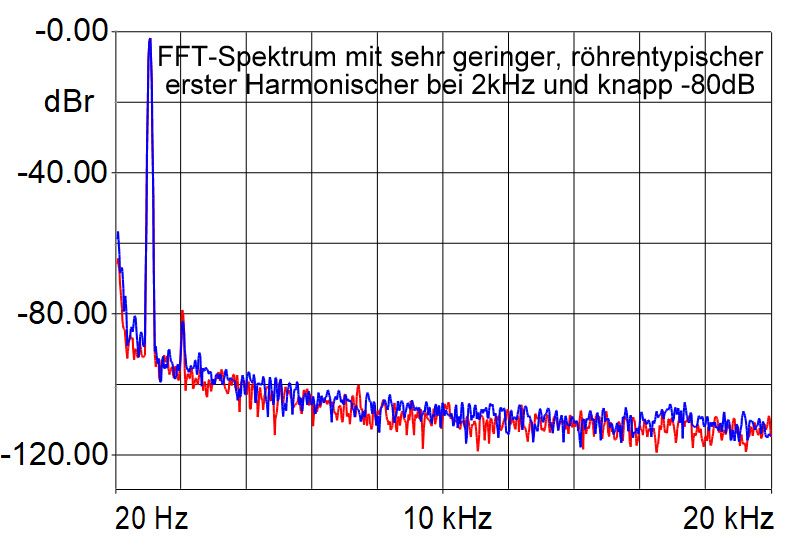
Measurement Values
| Signal-to-noise ratio Phono MM (5 mV / 1 kHz): | 71 dB(A) |
| Signal-to-noise ratio Phono MC (0.5 mV / 1 kHz): | 68 dB(A) |
| Phono MM: Input sensitivity for 1 V U out: | 13/4.1 mV |
| Phono MM: Gain factor: | 38/48 dB |
| Phono MM: Overdrive resistance: | 137 mV |
| Phono MM: Input resistance: | 47 kOhm |
| Phono MC: Input sensitivity for 1 V U out: | 1.9/0.6 mV |
| Phono MC: Gain factor: | 54/64 dB |
| Phono MC: Overdrive resistance: | 22 mV |
| Phono MC: Input resistance: | variabel Ohm |
| Output resistance at 1 kHz: | 930 Ohm |
| Stereo channel separation (5mV/1kHz/1kOhm): | 71 dB |
| Maximum output voltage (1 kHz, 1% THD): | 31 V |
| Power consumption Standby: | 0.1 W |
| Power consumption Idling: | 25 W |
Stereo Test
Sound Level Phono preamplifier: 100%
Price/Performance
Lab Comment
High signal-to-noise ratios with low distortion, very effective channel separation, good overdrive resistance and high maximum level, output impedance typical for tubes, encouraging the use of rather short connection cables.
Features
One MC and MM input each in RCA with two gain stages, output in RCA and XLR, dimmable modulometer, input resistance and capacitance adjustable, mono switch, individual measurement protocol
Test Devices
Turntable:
Transrotor Rondino nero/TRA 9/2.1 and 800-S,
Transrotor VISION/SME Series V
Cartridges:
MC:
Clearaudio Jubilee MC,
EMT JSD Pure Black,
Transrotor Figaro,
Vertere Mystic
MM:
Clearaudio Charisma V2,
Ortofon 2M Black LVB 250
High Output-MC:
Benz ACE H
Phono-Preamps:
Accustic Arts Tube Phono II,
Brinkmann Edison MkII,
Nagra VPS
Phono Cables:
Cardas Clear Beyond Phono,
HMS Gran Finale Jubilee Phono,
Boaacoustic Silver Galaxy Phono
Pre-/Power Amps:
Accustic Arts Preamp III / AmpII-MK4
Loudspeakers:
B&W 800 D3,
Dynaudio Confidence 50
Cables:
Boaacoustic Evolution Black.serie,
HMS Suprema (NF/LS/Mains)
What We‘ve Heard
Kenny Wheeler – Music For Large & Small Ensembles
Big band and modern jazz meet and create incredible musical moments. The recording is demanding for every system.
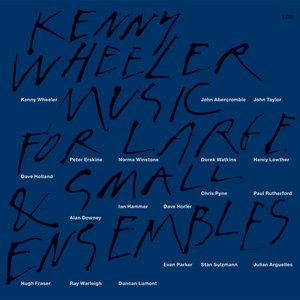
Menotti/Barber: Violin Concertos
Two extremely charming violin concertos in captivating sound quality: spacious breathing, energetically gripping and of opulent colorfulness.
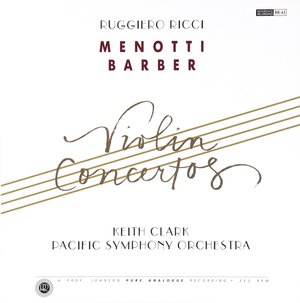
The Phono-King‘s Throne
What would a king be without his throne? Nagra‘s "Vibration Free Support Large" (VFS-L), takes this duty upon itself, being made to fit the weight and size of the Classic Phono. Further supporting the noble appearance of the phono-pre is also one of its tasks.
Most important though: The base is supposed to keep harmful vibrations away from the device. Especially tubes react strongly to these. The "throne", technically an accessory, consists of two aluminum plates that are individually mounted on specially tuned high-tech dampers. Four "arrays" (left) each of these are mounted below and between each layer and ensure effective decoupling from whatever it stands on. A firm connection to the device is ensured by four metal cones with a hard ball made of the synthetic resin Delrin at the tip, which take the place of the original flat feet (right). Tiny indentations in the upper plate provide the clearly defined position.
In our tests, the Classic Phono achieved its full transparency, three-dimensionality and suppleness on the VFS base, which costs around 1950 euros. Because of this experience, having the complete set should be considered as mandatory.
 MAGAZINE
MAGAZINE